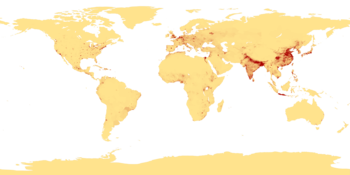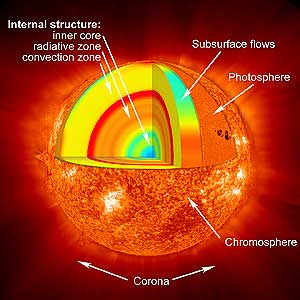OverPopulation is never a pleasant topic. Why? Well for so many reasons:
1. It is Anti-Capitalistic. Capitalism is founded on an unlimited growth model as is it’s hand maiden in literature – science fiction. Malthus sends Capitalists into a frenzy of “it ain’t so” denial. But if he is ultimately right, and our technology and science can not prevent our population from stabilizing at a set amount, then Capitalism is dead.
http://www.youtube.com/watch?v=r8-WgJVUcD4
2. It is anti-religious. Almost every religion in the world preaches procreation. The idea has always been that the religion that has the most recruits will eventually become the ULTIMATE Religion. Which is the goal of course.
http://www.youtube.com/watch?v=kndX3tVxCt8&feature=related
http://news.bbc.co.uk/2/hi/science/nature/7974995.stm
Earth population ‘exceeds limits’
By Steven Duke
Editor, One Planet, BBC World Service

 |
LIVING ON A CROWDED EARTH

Current world population – 6.8bn
Net growth per day – 218,030
Forecast made for 2040 – 9bn
Source: US Census Bureau
|
There are already too many people living on Planet Earth, according to one of most influential science advisors in the US government.
Nina Fedoroff told the BBC One Planet programme that humans had exceeded the Earth’s “limits of sustainability”.
Dr Fedoroff has been the science and technology advisor to the US secretary of state since 2007, initially working with Condoleezza Rice.
Under the new Obama administration, she now advises Hillary Clinton.
“We need to continue to decrease the growth rate of the global population; the planet can’t support many more people,” Dr Fedoroff said, stressing the need for humans to become much better at managing “wild lands”, and in particular water supplies.
Pressed on whether she thought the world population was simply too high, Dr Fedoroff replied: “There are probably already too many people on the planet.”
:}
3. OverPopulation is very male. Knowing that OverPopulation must end is very women centered. One of the most mysogynist impulses is religion’s and men’s impulse to control a woman’s womb. When women control their womb they produce 2 or 3 children which is just about right for their health and just about right for the planet. But over procreation has been the norm for the last 300 years and we are about to reap it’s wind.
http://www.youtube.com/watch?v=BlpyGhABXRA&feature=related
http://findarticles.com/p/articles/mi_m1525/is_5_84/ai_62896162/
COPYRIGHT 1999 Sierra Magazine
COPYRIGHT 2000 Gale Group
Y6B: The Real Millennial Threat
– effects of overpopulation – Brief Article
Think the population explosion is over? Think again.
On or about October 12, 1999, human population is expected to reach 6 billion. While it took until about 1800 to reach the first billion, the trip from 5 billion to 6 will have required a mere 12 years. Those born in 1930 will have seen humankind triple within their lifetime.
That makes all the more surprising the strange take of the national media, which over the past few years have been full of stories like “The Population Explosion Is Over” (The New York Times Magazine) or “Now the Crisis Is Global Underpopulation” (Orange County Register). These contrarian stories are based on two recent demographic trends: fertility in nearly all developed nations has fallen below the population-stabilizing “replacement” rate (2.1 children per woman, where mortality is low), and fertility is declining in most of the developing world. These trends led the United Nations to revise its population projections, reflecting a slower rate of growth than previously forecast.
Related Results
Short Term Energy Monitoring: A Road To Long Term Energy Savings?
“Slower,” however, does not mean slow. At the current global growth rate, 1.5 million people–roughly a new metropolitan Milwaukee–are added every week. Despite fertility declines, birthrates in much of the world remain high. For example, Guatemala’s fertility is 5.1 children per woman, Laos and Pakistan’s 5.6, and Iraq’s 5.7. And those are not even the high end of the spectrum: Afghanistan’s fertility rate is 6.1. The 43 nations of East, West, and Central Africa average 6.0, 6.2, and 6.3 children per woman, respectively. Countries that have reduced their birthrate to three or four children per woman are also growing very rapidly. This is partly because of “population momentum,” in which earlier high fertility yields a large proportion of young people. Even fertility rates fractionally above replacement can perpetuate rapid growth.
What if every nation’s fertility stayed at its present level? Human population would exceed 50 billion by the year 2100–if the earth could support that many.
The UN “medium” projections (perhaps the most realistic) now assume that fertility in developing nations will fall to about 2.2 children per woman over roughly the next 30 years. Even so, world population would reach 8.9 billion by 2050. The 2.9 billion gain would itself equal the world’s entire human population in 1957.
Most future growth will occur in the most distressed regions of the earth, many of which are already experiencing severe deforestation, water shortages, and massive soil erosion. In the medium projections, sub-Saharan Africa’s present population of 630 million will more than double to 1.5 billion by 2050. By that time, Afghanistan, Egypt, Iraq, and Pakistan will also more than double, as will Bolivia, Guatemala, Honduras, Nicaragua, and Paraguay. Bangladesh will grow by two-thirds, and India will increase by more than half a billion persons to 1.5 billion.
:}
http://www.nationalgeographic.com/eye/overpopulation/overpopulation.html
4. OverPopulation harbors everyone’s worst fears about “State” control. That we will be prohibited to breed “for our own good” and that only the rich shall have kids. Which would your rather have a human die off of 6 billion people or a little self control?? But we are past that now. The die off will happen and the real issue is “what do we do when humans become food”…and once we get over the crash how do we stabilize the population. Many world leaders are thinking about this now. Shouldn’t you?
http://www.youtube.com/watch?v=kndX3tVxCt8&feature=related
http://en.wikipedia.org/wiki/Overpopulation
Overpopulation
From Wikipedia, the free encyclopedia
Jump to: navigation, search


Map of countries by population density (See List of countries by population density.)


Areas of high population densities, calculated in 1994.


Map of countries and territories by fertility rate (See List of countries and territories by fertility rate.)
Overpopulation is a condition where an organism‘s numbers exceed the carrying capacity of its habitat. In common parlance, the term usually refers to the relationship between the human population and its environment, the Earth.[1]
Overpopulation does not depend only on the size or density of the population, but on the ratio of population to available sustainable resources. If a given environment has a population of 10 individuals, but there is food or drinking water enough for only 9, then in a closed system where no trade is possible, that environment is overpopulated; if the population is 100 but there is enough food, shelter, and water for 200 for the indefinite future, then it is not overpopulated. Overpopulation can result from an increase in births, a decline in mortality rates due to medical advances, from an increase in immigration, or from an unsustainable biome and depletion of resources. It is possible for very sparsely-populated areas to be overpopulated, as the area in question may have a meager or non-existent capability to sustain human life (e.g. the middle of the Sahara Desert or Antarctica).
The resources to be considered when evaluating whether an ecological niche is overpopulated include clean water, clean air, food, shelter, warmth, and other resources necessary to sustain life. If the quality of human life is addressed, there may be additional resources considered, such as medical care, education, proper sewage treatment and waste disposal. Overpopulation places competitive stress on the basic life sustaining resources, leading to a diminished quality of life.:}
:}
http://www.culturechange.org/overpopulation_resources.html
:}







